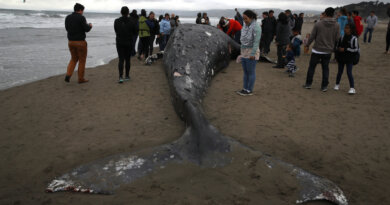Can You Safely Host Holiday Events During COVID-19?
Nov. 10, 2020 — After months of separation from friends and family due to COVID-19, many people hope to reconnect over such holidays as Christmas and Hanukkah. But health experts continue to encourage people to practice safe behaviors and avoid situations that could expose them or their loved ones to the virus.
“COVID-19 is not the gift we want to give at the holidays,” says Kelly Cawcutt, MD, an assistant professor in the Department of Internal Medicine at the University of Nebraska Medical Center.
According to the CDC, higher-risk activities around the holidays include:
- Attending large indoor gatherings with people from outside your household
- Going to crowded parades or races
- Shopping in crowded stores, especially around Thanksgiving
Many medical professionals will caution that the only way to completely reduce the risk of infections is to remain separated and find virtual substitutes for family holiday traditions. Activities that involve masks and touch-free social distancing reduce risk but may not fully stop it.
If you’re determined to gather with others, here are some strategies that may help.
Testing
Coronavirus testing can help manage potential risk. “If you’re able to do testing around the event, that will add an additional layer of security and reassurance,” says Mark Rupp, MD, chief of the Infectious Diseases Division at the University of Nebraska Medical Center.
Get tested as close as you can to the event. Once you do, self-quarantine until the event happens to avoid getting exposed (more on travel below). And remember that if you’re early in the infection, you can test negative. Some universities, such as University of Arizona, are encouraging students to get tested before going home, while New York’s public university system won’t allow students to leave campus unless they have a negative test.
With U.S. coronavirus cases increasing and expected to continue into December, it may be harder to get a test during the holidays. “If there are more and more positive cases, we may see supply chain issues with the number of tests available,” Cawcutt says.
To help avoid any possible shortages, see if you can schedule a test ahead of time, as many pharmacies and other sites offer online scheduling.
Travel
Airlines and airports have been adopting safer practices in 2020, but holidays are traditionally the busiest times of the year for travel. If an airplane is not full, travelers can lessen their risk by a lot by wearing a mask, using hand sanitizer, wiping surfaces, and taking advantage of the circulated air. But there may be more potential risk in crowded airports or security lines.
Driving in a car offers the safest way to travel while reducing potential exposures. Take precautions such as wearing a mask at gas stations and rest stops. Do not stop to eat meals inside busy crowded restaurants.
Visiting Loved Ones
Holding an in-person visit with friends or family from outside your household increases your risk of getting infected, especially when travel and extended stays are involved. Families should take extra care when younger adults such as college students, who may be more likely to have been exposed to the virus, interact with parents or grandparents, who are more likely to be at risk.
“I think the reality is, unless everybody is doing the same safe behaviors, there’s no guarantee a gathering is going to be safe,” Cawcutt says.
The CDC says anyone who wants to attend a holiday gathering with people outside of their household should limit their exposure with people outside of that household for 14 days before the gathering.
Cawcutt also recommends self-quarantining ahead such gatherings, but adds, “If you wore a mask for a quick trip to a store for essentials, or had to work but remained masked and distanced the entire time, that would be OK.”
Having out-of-town guests stay overnight under the same roof, even masked, can increase risk. Wear masks and social distance while spending time together, and have people stay in separate rooms, if possible. “The question comes down to, if you’re staying with a loved one, is there capacity to have distance or places where you can go, close the door, and take the mask off?” Cawcutt says.
She adds that spending nights at a hotel or Airbnb to reduce exposures may not be helpful. “Going to a hotel, you may be exposed to the same amount of risk,” she says.
Meals and Parties
Outdoor holiday meals and parties offer a safer option than indoor activities. But even with heaters or firepits, many parts of the country may be too cold for them to be practical. If you have an indoor meal, wear a mask when not eating, practice social distancing, and try to have fewer guests for a shorter time than usual.
“If anyone at the event is symptomatic or had clear contact for exposure, they shouldn’t be there,” Rupp says. “If only one person is going to be tested, it probably should be the cook.”
Instead of buffet or family-style food service, provide individual meals or have one masked person make the plates. “Plates and their contents are less worrisome than airborne spread,” Rupp says.
CDC-Recommended Dinner Party Practices
- Thoroughly wash your hands before and after preparing food.
- Wear a mask while preparing food for people outside your household.
- Limit the number of people in food preparation areas such as kitchens or around grills.
- Rather than passing plates or lining up for self-serve buffets, have one masked person serve all the food to prevent multiple people from handling the serving utensils.
- When possible, use touchless garbage cans during cleanup.
Religious Services and Events
Religious gatherings and celebrations tend to be their most crowded at the holidays. When you’re inside houses of worship, the CDC recommends wearing masks and social distancing, which can require putting limits on the size of gatherings and posting signs that encourage people to keep at least 6 feet apart. Celebrants should avoid sharing commonly touched items like hymnals.
Cawcutt encourages people to be sure that others are also practicing safe behaviors. “It’s not just what you’re doing to be safe, it’s what other people are doing,” she says. “When indoors, you have to remember how many people are allowed to gather in a place at a given time. You might see people wearing masks inappropriately. Wearing a mask over your mouth but not your nose can still spread infections, especially when singing carols or celebratory songs.”
Outdoor holiday events can let you be a little more flexible. “I think we’ll see more capacity for people to have adequate distancing outdoors, like repeated Christmas tree lightings,” says Cawcutt. “But you can still get exposed outdoors, so wear a mask in crowds.”
Gift Exchange
One tradition that may remain intact in 2020 is the exchange of presents, since the virus is less likely to spread via surfaces. “With good hand hygiene, the virus is very easily killed,” Cawcutt says. “Gifts can be given in advance, whether in person or sending in the mail. I feel very comfortable with giving gifts over the holidays.”
Still, people should avoid in-person exposures when giving the presents. You may want to drop them off at a safe distance and have the opening party on Zoom.
After the Holidays
The CDC suggests that if your holidays involved higher-risk activities, or you think you may have been exposed, take these precautions: “Stay home as much as possible. Avoid being around people at increased risk for severe illness from COVID-19. Consider getting tested for COVID-19.”
Cawcutt encourages people not to forget that winter is also the usual time to catch colds and the flu. “Because of mask use and hand hygiene, we may see a decrease of cold and flu this season,” she says. “But coinfections do exist. If you get two infections at the same time, there’s a risk that you can be sick longer, the severity could be worse, or the recovery could be slower. And these could happen in sequence. You could be recovering from one and get infected with the other.”
Overall, people should be prepared for their holidays to be unusual in 2020. “The thing I tell people about this is that we all feel the fatigue and a desire for things to be normal, but normal is not safe right now,” Cawcutt says.



